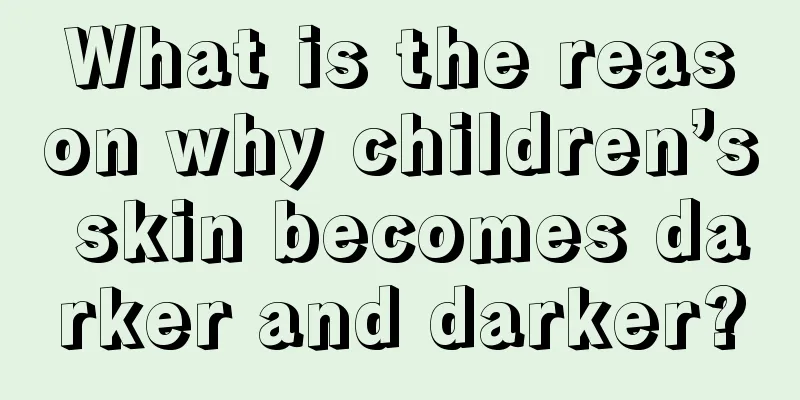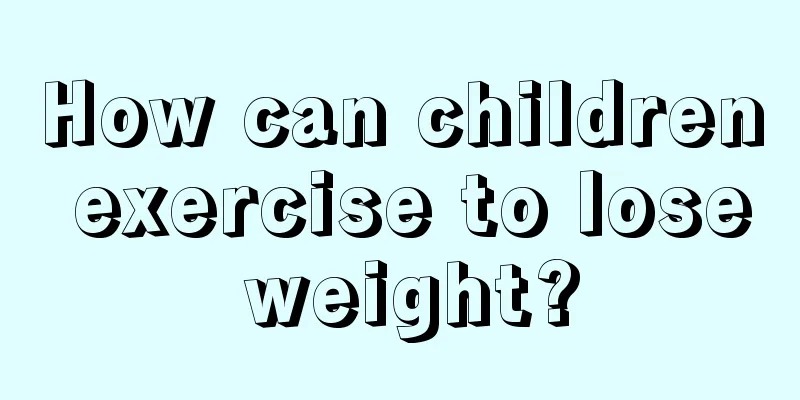Child with crooked neck

|
If a baby has a crooked neck, parents should correct it in time. If the baby often sleeps with his head on one side for a long time, it will cause asymmetry of the left and right sides of his face, which will not only affect his appearance but also cause problems for the baby's neck. If this continues, it will also affect the baby's future life. Some parents may not know what torticollis is. Torticollis is commonly known as "crooked neck". It is affected by the baby's facial development and is smaller than the opposite side. If the disease is treated correctly and effectively with non-surgical methods in the early stages, most children can be completely cured.Four symptoms of torticollis: (1) The head is tilted to one side, with the chin toward the opposite shoulder; (2) A lump appears on the neck; (3) The left and right sides of the face are asymmetrical in size; (4) Restricted neck movement. These symptoms may be present when the baby is born, or they may develop gradually later. Some symptoms may disappear without treatment.
(1) Affecting appearance: The most obvious impact is the asymmetry of the baby’s head shape. In severe cases, it can cause asymmetry between the left and right sides of the baby’s face, resulting in an uneven face. (2) Since the eyes and ears are no longer on the same horizontal line, the baby's vision and hearing will be indirectly affected. (3) The development and arrangement of teeth will also be indirectly affected. What causes torticollis in babies? There are many reasons for torticollis in babies: Abnormalities of muscles, bones, nerves, etc. can cause the neck to tilt to one side; Bad sleeping and holding postures can cause pseudo-torticollis in babies, such as sleeping on the same side for a long time or holding the baby. You don't need to worry too much about this. Adjust the sleeping and holding postures and the symptoms will gradually improve and disappear. The most common cause of torticollis in children is fibrosis of the sternocleidomastoid muscle, the largest muscle in the neck. The sternocleidomastoid muscle is located on both sides of the neck. When the muscle on one side becomes fibrotic, the muscle on that side becomes hard and shorter, which will cause the baby's head to tilt to that side and the chin to tilt to the other side. How can I tell if my baby has torticollis? The symptom of torticollis in a baby is a tilted head. When the baby lies flat on the bed, he tends to sleep on the same side; when the baby is sitting, his head will be fixed to one side. At this time, parents can try to attract the baby to look left and right, and they will find that the baby has difficulty turning his head and neck. Some children suffer from torticollis in the womb, so their faces are not symmetrical after birth. A careful examination after birth will often reveal a lump (66?) on the neck, about 1 to 3 centimeters in size, as if a tumor has grown on the neck! If not healed, the lump on the neck of older children will turn into a very tight tendon. What impact does torticollis have on babies? Fibrotic muscles cannot contract and relax normally. In addition to losing their function, they also restrict the movement of the neck and cause asymmetrical muscle development on both sides of the baby. In addition, because the baby always sleeps on the same side, the pressure on the head and face will be asymmetrical.
The symmetry of the face and head is a very important indicator. The more asymmetric the face and head are, the greater the impact of torticollis is, and the more active and early treatment is needed. Because the baby's skull is still growing when he is an infant, there is a chance that any asymmetry will recover before the baby is six months old. After six months, the baby's skull is fixed. If the baby's head and face are still asymmetrical after six months, it will affect his appearance for the rest of his life, so be careful! How to treat torticollis in babies? Make two small sandbags (use green sand or yellow sand, wash it with water, expose it to the sun or heat it in an iron pan to disinfect it. Or you can use millet. The main purpose is to prevent the baby from turning his head. Choose double-layer cloth to sew, with a diameter of about 20×10 cm), place the sandbags on both sides of the child's head when he sleeps, which can fix him in the correct position. This treatment should be continued for at least 6 months. Mothers should choose their position when breastfeeding and sleeping according to the different locations of the lesions. For example, if your child has torticollis on the right side, you should place the child on your left side when feeding and sleeping, and vice versa. This will help the child to correct. If the effect is not good, surgical treatment should be chosen. The surgical age is usually around 1 year old, and it is best not to exceed 1 and a half years old. Surgery can also achieve ideal therapeutic effects. Nowadays, many children with torticollis are over-treated. Although it is clearly physiological torticollis, some informal hospitals persuade them to undergo physical therapy, which causes trouble for the children and their parents in vain. It is recommended that if you have any problems, you go to a specialist hospital to see a specialist doctor for treatment, and do not believe in advertisements casually. |
<<: Physiological characteristics and heart rate characteristics of preschool children
>>: How to control childhood obesity
Recommend
Travel checklist for a one and a half year old baby
For babies who are one and a half years old, it i...
What are the symptoms of intestinal spasms in children?
Intestinal diseases in children are one of the ki...
What should I do if my child has a bacterial cold?
Children's body resistance is much weaker tha...
How to treat intussusception in children?
Intussusception in children is a disease caused b...
The dangers of cerebral palsy
Cerebral palsy is a disease that can cause great ...
Symptoms of hyperthyroidism in children
Many children are prone to hyperthyroidism. Many ...
Children have fever and joint pain
Children always have joint pain when they have a ...
What should I do if my nine-month-old baby keeps waking up at night?
A nine-month-old baby is still quite small and de...
What to do if children's nails are layered
Some children's nails have abnormal condition...
What tests are needed for children with ADHD?
When it comes to ADHD, many parents think that it...
Is it good for children to drink lemon honey water?
Everyone knows that lemon honey water is a drink ...
Is it possible for children to grow taller if their parents are not tall?
Parents who are not tall will worry that their ch...
What causes favism in children?
Favism is a hereditary disease in children. If pa...
What should I do if my child has a wheezing sound in his throat?
Most parents find that their children have phlegm...
Baby's foot turns inward
The phenomenon of babies turning inward is very c...









